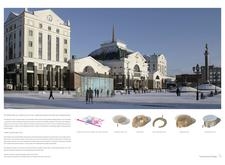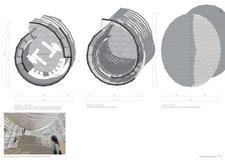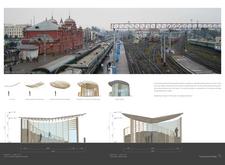5 key facts about this project
### Trans-Siberian Tourist Information Center
Situated adjacent to the historical Trans-Siberian Railway Station, the Tourist Information Center is designed to serve as a focal point for travelers. The center aims to enhance the experience of those journeying along the railway by providing a hub for information and cultural exchange. This design incorporates the surrounding landscape and architectural context, resulting in a structure that respects traditional influences while offering a contemporary aesthetic.
#### Spatial Strategy
The design features a circular, organically evolving form that promotes flexibility and fluidity in movement. A smooth circulation path guides visitors toward the center, fostering exploration and interaction. Unique architectural elements, such as upward spiral stairs leading to an observation deck, provide opportunities for panoramic views of the surroundings. The interior space has been thoughtfully arranged to accommodate a variety of functions, with modular furniture allowing for adaptable configurations to meet the diverse needs of visitors.
#### Materiality and Sustainability
The selection of materials reflects a commitment to sustainability and functionality. Laminated wood serves as the primary structural element, enhancing the warmth of the interior. Large expanses of super clear glass promote transparency and blend the building with its environment, while a steel framework provides necessary support. Trowel-finished lime concrete flooring offers durability and ease of maintenance, complemented by the use of plywood in various internal contexts. The landscaping surrounding the center is designed to enhance interaction with nature, underscoring the project's emphasis on ecological awareness.





















































